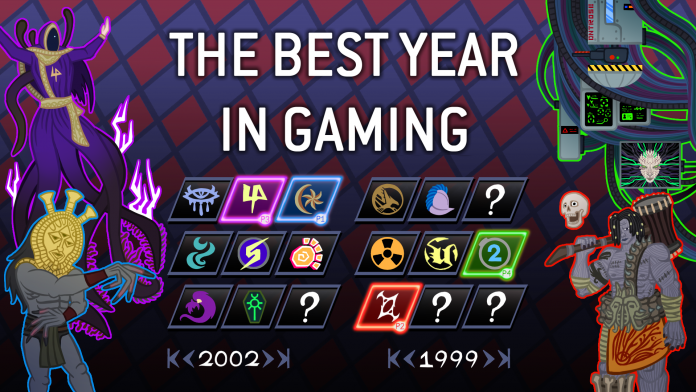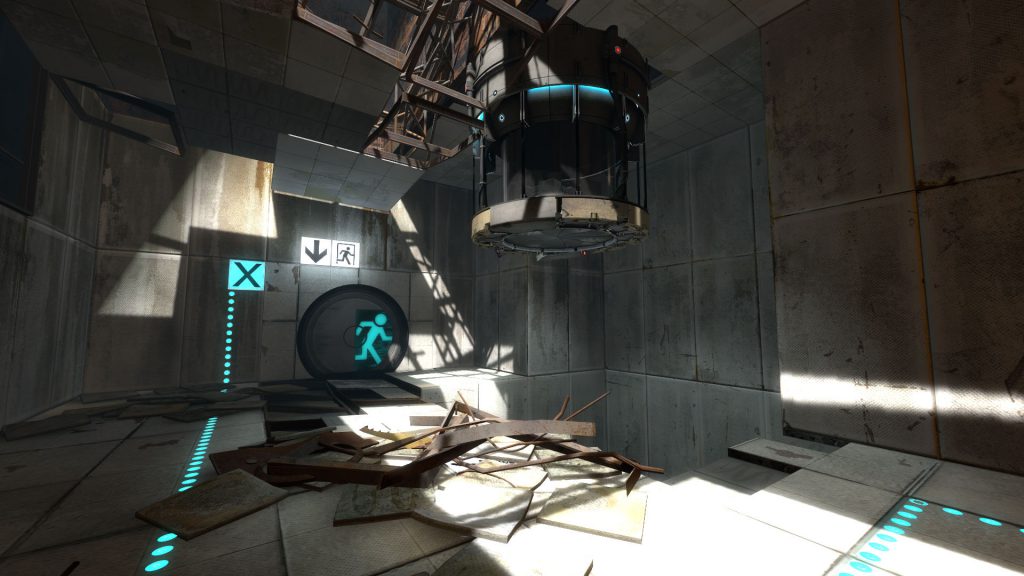Last year’s stacked lineup of games for the Game Awards had us thinking: What was the best year in gaming? As part of our series on determining gaming’s best year, we’re putting together an article on each year, charting the major releases and developments of the year, and talking about both their impact and what made them great.

The Year: 2011
2011 was the Arab Spring, the year Bin Laden died, the year of the horrific Japanese earthquakes and tsunami, and doing the math, my senior year of high school. It was also the year Game of Thrones premiered on HBO, and fantasy IP quickly became material for premium TV instead of niche media for geeks.
At first I couldn’t really remember what games came out in distinctly in 2011 (with one major exception I’ll get to later) as opposed to the years around it; after a quick search, I felt pretty dumb. This year has some stacked releases that still hold up today. I’ll mention the biggest releases here, and talk about a few of my favorites.
TheChirurgeon: Tech-wise, 2011 was an interesting year. Google Maps finally transitioned to more real-time data, and after the release of the first Android phones 2008 Maps became one of the most important phone apps in the world. On the entertainment side of things, Netflix was in the middle of a full transition to streaming, and announced it would be separating its DVD rental and streaming plans. It would later abandon DVD rental entirely.
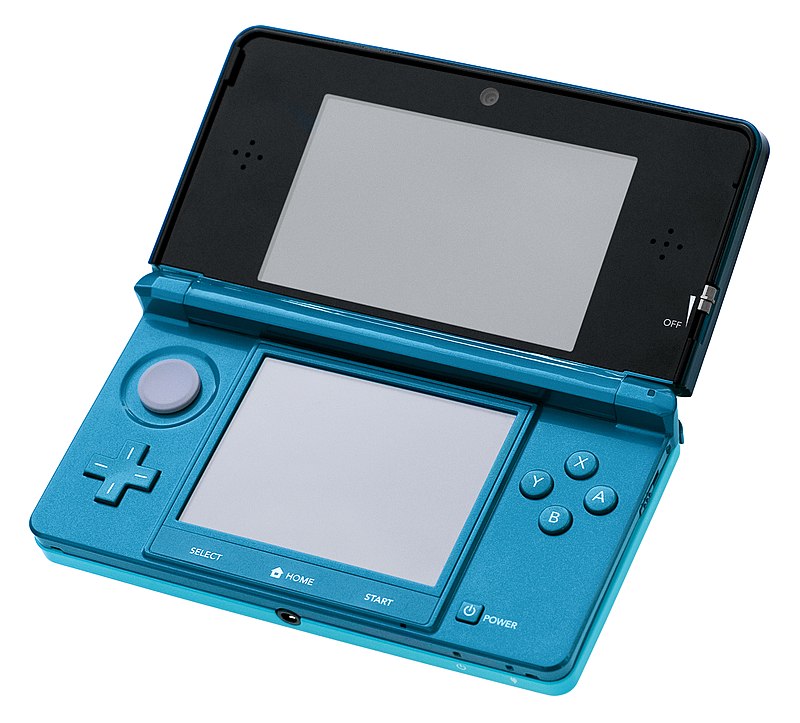
The Nintendo 3DS Brings a New Gimmick to the Market
TheChirurgeon: The Nintendo DS was Nintendo’s best-selling handheld game console of all time and to this day is second only to the PS2 as the second best-selling console of all time. So it’s safe to say it was a pretty big hit Nintendo, even if it ended up cannibalizing the sales of the Gameboy Advance. For their follow-up in 2011, Nintendo released the Nintendo 3DS, a larger, sleeker version of the DS which was notable for its ability to display stereoscopic 3D images, allowing games to give 3D effects without the need for special glasses. In a sign of how mobile gaming had changed things by 2011, the 3DS also incorporated a wifi adapter, a camera (which it could use for AR effects), and some social networking features called StreetPass and SpotPass.
The 3DS was a powerful console visually, nearly on par with the Wii graphically speaking, and capable of doing quite a bit of 3d rendering. The system’s stereoscopic 3D effects were… well, they worked OK but they were pretty much just a gimmick, and by the end of the system’s lifespan a 2DS would be released. What’s really notable about the device is that it marked Nintendo’s first good foray into the digital space, incorporating a 2 GB flash memory card which gamers could download games onto after purchase from Nintendo’s eshop. On the whole the 3DS was fine, but struggled compared to Nintendo’s other efforts and only sold around 75 million units over its lifespan. This is likely less due to competition from Sony (more on that in a bit) and more due to competition from mobile games, which had become more serious and would continue to eat a growing chunk of the casual market. Nintendo’s next console play would be to just cannibalize its handheld base entirely.
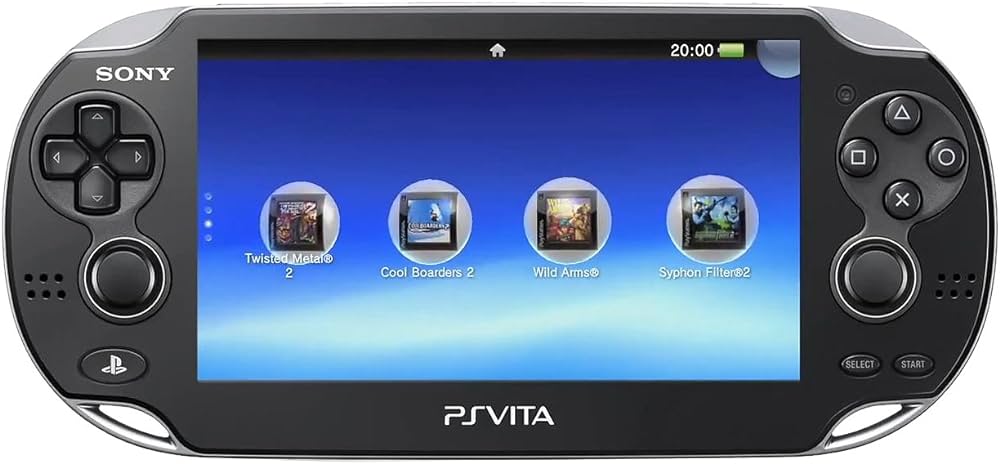
Sony Makes a Second Attempt at Handheld Domination with the Vita
TheChirurgeon: Sony attempted to stake a claim in the handheld market in 2004 with the PlayStation Portable (PSP), a powerful handheld game console intended to compete with the Nintendo DS. It…didn’t, failing to attract both third-party developers and casual gamers. That said, the PSP still shipped more than 70 million units worldwide over its lifespan, and while that’s less than half of what the Nintendo DS sold, those are pretty respectable numbers, and nearly as many units as the PlayStation 3 moved.
So in 2011 Sony figured they could build on that success with a new, updated handheld – the PlayStation Vita, which released in December. Compared to the PSP the Vita was much more powerful machine (somewhere between the PS2 and PS3), and capable of some games which were visually very impressive for a handheld. It also incorporated a touchscreen and a pair of thumbsticks this time around, allowing for more modern 3D gaming experiences. That said, despite all its power, the Vita had a massive problem: No games. The PSP had previously had poor third party support and that problem got worse on the Vita, especially when poor initial sales led Sony to stop releasing sales figures a year later. Sony only sold an estimated 16 million PS Vitas and left the handheld market behind, with the Vita considered a failure. Ultimately the Vita also suffered from the mobile attrition Nintendo felt with the 3DS, while at the same time showing up too late in the life cycle of the PS3 to be a compelling alternative/co-development platform, as developers were starting to work on PlayStation 4 games instead.
A Quiet Year for Tabletop Gaming
As far as tabletop gaming goes, this is a pretty quiet year. There aren’t any huge edition releases to speak of, but there are some really solid releases on the board game front. Elder Sign, Trajan, and Mansions of Madness all came out this year as board gaming continued its rise to popularity. Cards Against Humanity became an international sensation, and was quickly played to death. Risk: Legacy revolutionized board games this year by introducing legacy games, which allowed for players to build a narrative by keeping track of your progress from previous games and let them affect future games. Games Workshop released Dreadfleet this year, which was a nifty little specialist game with cool fantasy boats.
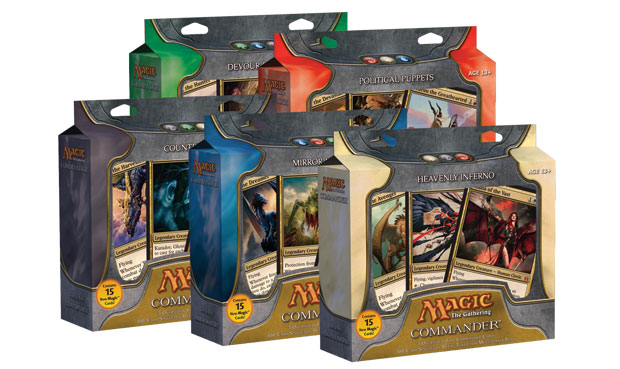
Magic the Gathering: Commander
In 2009 Wizards had begun launching a series of “Summer of Mulitplayer” events, each of which was accompanied by a new preconstructed set, each featuring some kind of oversized card release, adding a new rules format to the game. In 2009 that was the plane-shifting format Planechase, followed by the “everybody vs a single villain” format of Archenemy in 2010. I remember playing a black/red preconstructed deck for Archenemey and beating down my friends with it, it ripped (quick google shows the name of this deck was “Bring about the Undead Apocalypse”, hell yeah).
Planechase and Archenemy were both fun games, but didn’t make a big splash on the larger magic scene. Fun novelty releases that never got much traction of their own. Then Commander came along and changed all that.
If you want to get technical, Commander as a format had existed before it received its own bespoke release from Wizards. For many years, the format existed as Elder Dragon Highlander, or EDH, and occasionally commander is still referred to by this abbreviation. But 2011 saw the release of Commander preconstructed decks, and the format exploded in popularity from there.
TheChirurgeon: This release was a big deal in 2011, signaling Wizards’ plan to grow the format and make the more casual, multiplayer format a major part of their release strategy. Sales for the product were great, fueled by some great new commander options, and since then the release of new Commander decks has become a regular part of every Magic set release.
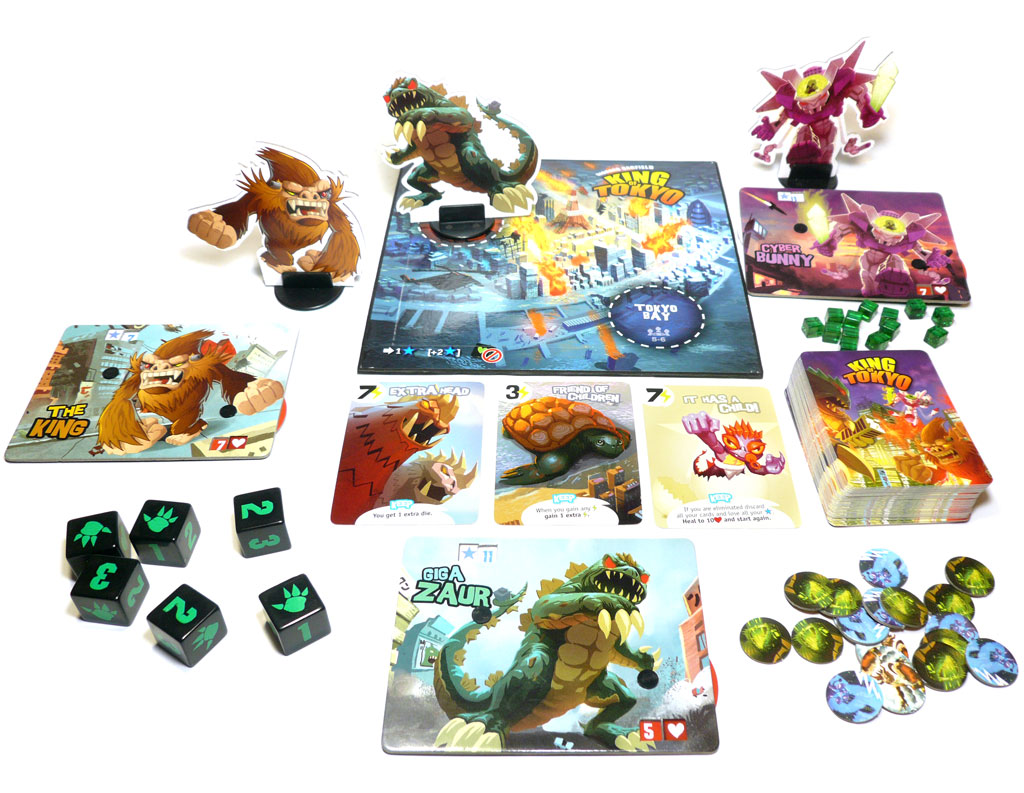
King of Tokyo
King of Tokyo is a great game for folks like me, who enjoy both cute things and big monsters smashing stuff. Also, rolling a bunch of dice. At its core, King of Tokyo is a simple dice rolling game. Each player controls a monster, and on your turn you roll a set of six dice, having the option to reroll these dice up to three times. Matching results on the dice have different effects depending on the result, ranging from attacking other monsters, healing, gaining energy to trade for power cards, or earning points.
During the game, one monster can sit inside Tokyo, and becomes the focus of all of the other monsters attacks. If a monster survives a turn in Tokyo, they gain points and strike out at the other monsters outside Tokyo. A player can leave Tokyo if they take damage, and then the player who damaged them enters into Tokyo. The winner is the first player to earn 20 points.
King of Tokyo rules because its simple and fun. The art on the cards and of the monsters is a tribute to the big B-movie monsters we all know and love, like King Kong, space aliens, and Godzilla. The game is fun for folks who play tons of board games as well as board game newbies alike, and remains one of my go-to board game recommendations years later.
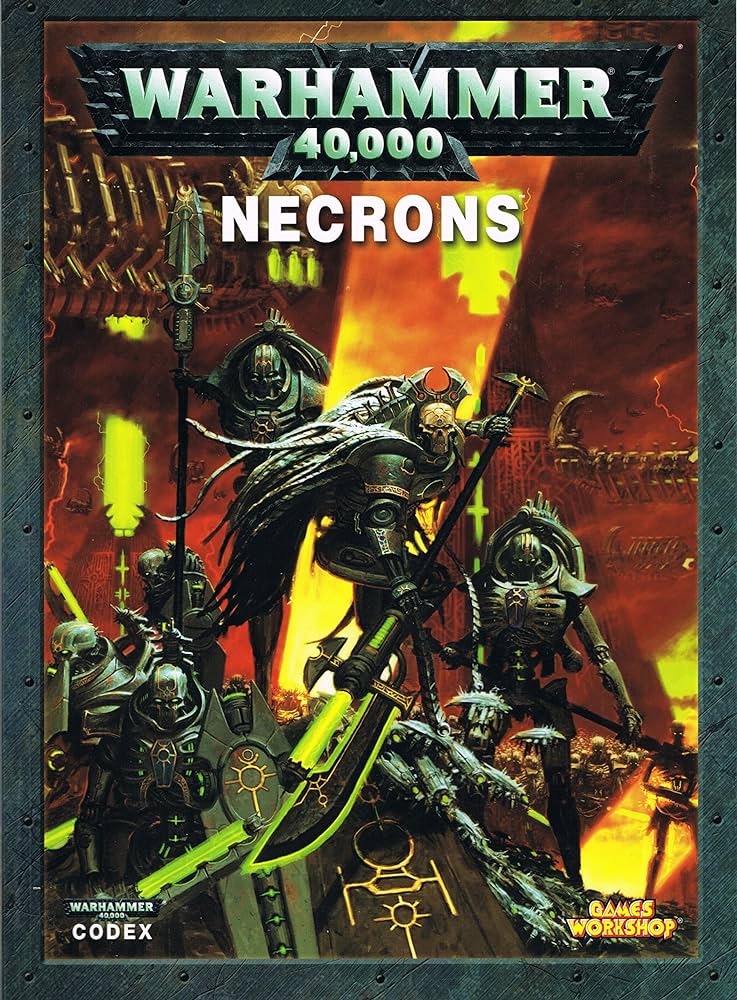
Codex: Necrons (Fifth Edition)
Back in the olden days of Warhammer 40,000, the Necrons were very different than they are now. Prior to 2011, the Necron lore was pretty sparse. They were still involved in the War in Heaven against the Old Ones, but beyond that its very different. They were pawns of the C’tan in the 41st millennium, a silent tide of silver warriors whose motives were inscrutable and entirely devoid of personality. They were still a gigantic threat to the galaxy, but aside from being “robot skeletons in space who also have that big grim reaper ghost” had little going on for them.
Fifth Edition Codex: Necrons represents one of the biggest and most successful rebrandings of an entire faction in Warhammer 40,000 history. Necron lore was vastly changed and deepened, introducing pivotal characters like the Silent King, Imotekh, and Trazyn. Necrons were no longer slaves to the C’tan, but instead turned against them at the end of the War in Heaven, shattering them and using their shards as tools of war. Much of the modern range was introduced, such as Crypteks, Lychguard, and expanding the number of Canoptek units.
When the change first happened, some unhappy fans claimed that Necrons were now just “Tomb Kings in space,” like that was some sort of bad thing. I’ll take a Tomb King in space over the old school silver tide days, because you can write stories about Tomb Kings in space, and some incredible novels have been released focusing on the Necrons, like The Infinite and the Divine.
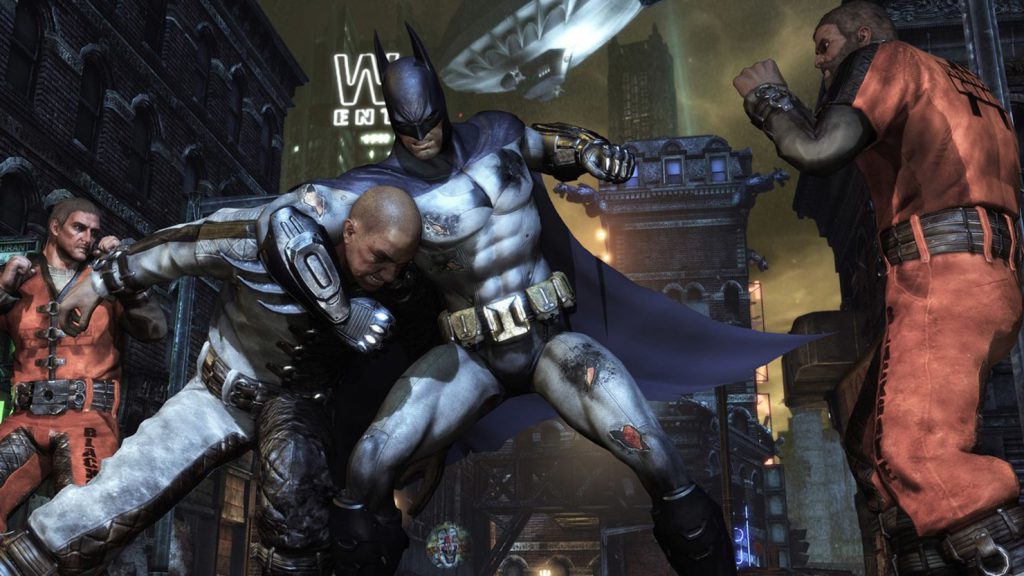
Batman: Arkham City
If Batman: Arkham Asylum broke the superhero curse on video games, than Batman: Arkham City was the game that would kick off the superhero video game golden age.
Arkham City puts us back in the shoes of the Dark Knight, who’s now trapped in a walled off section of Gotham that’s been repurposed as a place to hold the city’s worst criminals. With his secret identity at risk of being exposed by Hugo Strange unless he is able to stop his secret plot, and slowly dying of the Titan serum injected by the Joker, who is also suffering from Titan’s ill-effects.
From there, the fantasy of being the Batman that made Arkham Asylum so great returns, but with a bigger sandbox and more toys to play in. The biggest improvements here are the stealth sections, where Batman’s additional tools and more varied environments let player creativity really shine. The pinnacle of these is the memorable Mr. Freeze bossfight, where instead of beating the tar out of freeze head-on, you have to defeat him with multiple stealth takedowns. He’s very dangerous if you get caught out in the open, and Freeze will adapt each time you use a takedown on him, making any previous method impossible. In a series that suffers most in it’s boss encounters, Mr. Freeze stands alone as one of the best moments in the game. It’s a tense fight that makes the player feel like both predator and prey in equal measure, and pushes you to be creative to succeed.
Couple the gameplay improvements with the excellent story by Paul Dini and excellent performances by the late Kenvin Controy and Mark Hamill, and Arkham City is the fan favorite of the Arkham games. The popularity of City would launch the Arkham series into the mainstream, and make superhero games popular enough as an idea to spawn other similar superhero action games, like the Insomniac Spiderman games years later.
 Portal 2
Portal 2
The original Portal from the Orange box is such a small game that it often feels more like a proof of concept rather than a full release. By the time the game really can stretch its legs with its puzzles and humor, it’s the big finale and then it’s over. Despite the games short length, Portal was a breakout hit from the Orange box.
If Portal is the proof of concept, then Portal 2 is the full game that the first game’s finale promised it could be. Both the storytelling and puzzles are greatly improved upon in a much longer adventure than the first. The game can spend a little bit less time explaining the concept of the portal gun and more time adding new twists to it with the environment and new hazards, like colorful goop which affect your movement and light bridges that can be used in conjunction with your portals to reach new places. GLaDOS gets more time to shine as a snarky antagonist turned reluctant ally, and a new storytelling highlight is the audio logs of Cave Johnson, the former CEO of Aperture Science played by J.K Simmons.
Portal 2 also introduces a cooperative multiplayer mode, where two players can each take the role of an adorable little robot guy with a portal gun. The puzzles are more intense in cooperative mode, since the addition of a second set of portals really allows the developers to up the complexity of each room. What follows is a delightful mixture of wanting to throttle your coop partner for not being smart enough to solve puzzles, to high fiving them because you found the solution and both feel like the smartest people alive.
Both the single player and multiplayer of Portal 2 really hold up, and if you’re a fan of puzzle games then Portal 2 is a must play.

The Elder Scrolls V: Skyrim
When I said that I had trouble recalling the games that came out in 2011 with one major exception, I was, of course, talking about The Elder Scrolls V: Skyrim.
I remember waiting in line at midnight for Skyrim, and then heading straight to my buddies’ house where we had all dragged over our Xbox consoles and TVs to enjoy Skyrim together. I then playing it for damn near 24 hours straight while hyped up on enough Mountain Dew Code Red to kill a horse. How could I put it down though? Skyrim’s open world in 2011 was in a league of its own.
Sure, over ten years later, there are much better open world RPGs to sink your teeth into than Skyrim. And the game did cut down on a whole bunch of complexity from prior titles that was definitely missed here. But neither of these things are really related to Skyrim‘s greatest strength as a game. For me, Skyrim and its open world stands the test of time for being probably the best game ever made for just shutting off your brain and just having fun. The perfect junk food game.
It’s a game that can be played for a quick twenty-minute session to kill some time, or binged in an all night game session. You can finish a dungeon real quick on the map, or power through an entire faction questline. Every time Skyrim seems like it’s running out of adventure for the player, there’s a new marker on the map, a new dragon overhead, a new quest marker to investigate. The gameplay loop of discover, fight, and loot rarely has any big changeups, but that loop is so well refined that it doesn’t really need any.
Skyrim spawned a craze of open world games that would all be measured against it for many, many years to come. Really, it wasn’t until The Legend of Zelda: Breath of the Wild that any of these open world games could even compare. Skyrim would also get more re-releases than you can shake a stick at, for basically every console whose hardware was capable of running it.
Skyrim is not a perfect game. Its flaws are very easy to find, if you’re looking for them. But that’s never been how Skyrim is best played. It’s best played full of Mountain Dew in the middle of the night, without a care in the world, finding a new adventure around every corner.

Deus Ex: Human Revolution
TheChirurgeon: It took eight years, but in 2011 Eidos-Montreal managed to wipe the bad taste out of our mouths left by 2003’s Deus Ex: Invisible War, the (deservedly) much-maligned sequel to Deus Ex, one of the all-time greats. Human Revolution is a prequel to the original game (because it kind of has to be), and introduces us to Adam Jensen, a cyborg security officer working for Sarif Industries, the company responsible for creating and popularizing cybernetic augments. The game follows in the original’s footsteps by being an immersive sim combining stealth, puzzle, and role-playing elements, though it is neither anywhere near as elegant nor as groundbreaking as it’s predecessor. It’s still a fun time, however, with a more grounded story (there are no aliens) that takes cues (and digs at) modern-day politics and media coverage. I’ve always been of the mind that it’s a very solid and underrated game sandbagged by impossible expectations.

L.A. Noire
TheChirurgeon: Team Bondi were a small studio founded in Sydney in 2003. They developed a single game, published by Rockstar, amid a storm of controversy around staff credits, poor working conditions, and behind-the-scenes drama, which led to that game taking seven years to make. That game was L.A. Noire, a detective game set in Los Angeles in 1947, following the exploits of detective Cole Phelps as he climbs the ranks of the LAPD and comes to grips with the actions of his past in World War II. L.A. Noire is a decent game – it has a solid story and it does some interesting things with its interrogation mechanics, as you investigate crimes and speak to witnesses and suspects. And it’s in these interrogations where the game shines: Team Bondi put a ton of effort into character facial animations, creating expressions which help you discern character motivations. It’s truly groundbreaking stuff and even a decade later we haven’t really put “regular human blinking” into our facial animations, even in triple-A titles like God of War: Ragnarok.

Uncharted 3: Drake’s Deception
TheChirurgeon: Uncharted 3 is the most technically impressive game on the PlayStation 3, showing off Naughty Dog’s unmatched ability to squeeze performance out of the console. The game is visually stunning, jumping from one massive set piece to the next, with pacing and plotting that never gets old. The character work remains a series highlight, with character animations nearly on par with L.A. Noire’s (better hands and bodies, worse faces). Some people lament that we never got a true 3D Indiana Jones game franchise during this run of console generations, but the reality is that Uncharted was everything we could have asked for from a modern day version of that genre and then some.
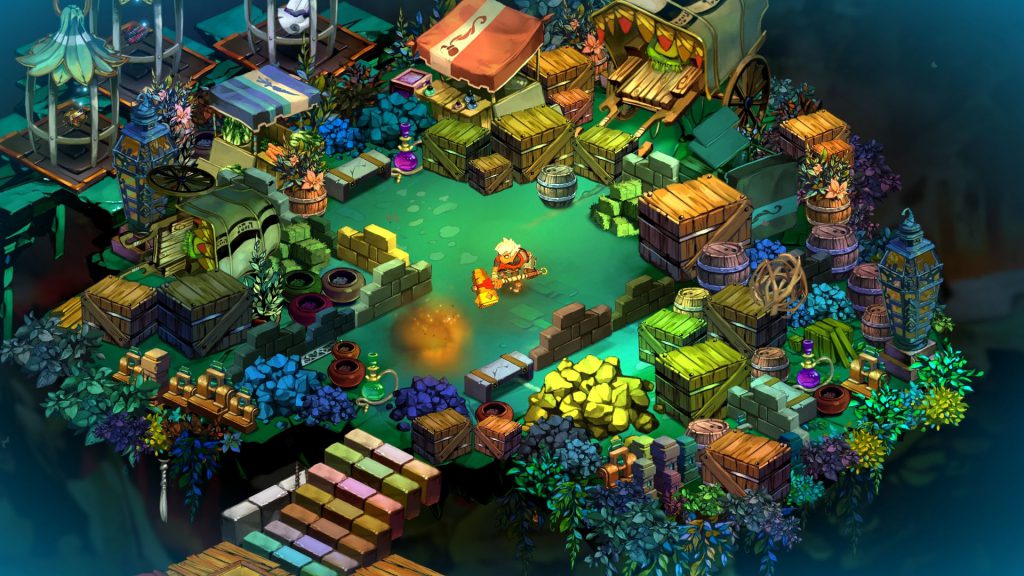
Bastion
TheChirurgeon: The debut effort from Supergiant Games was a breakout hit, kicking off a stellar run of games for the “indie” studio over the next decade unlike few the industry has ever seen. Bastion is a phenomenal top-down action game, with an incredible soundtrack and some solid story beats. It also has an interesting gimmick – a narrator who talks about your actions – but that’s secondary to it just being a very solid game. It’s a stellar debut from Supergiant and isn’t the only game of theirs we mention in this series.
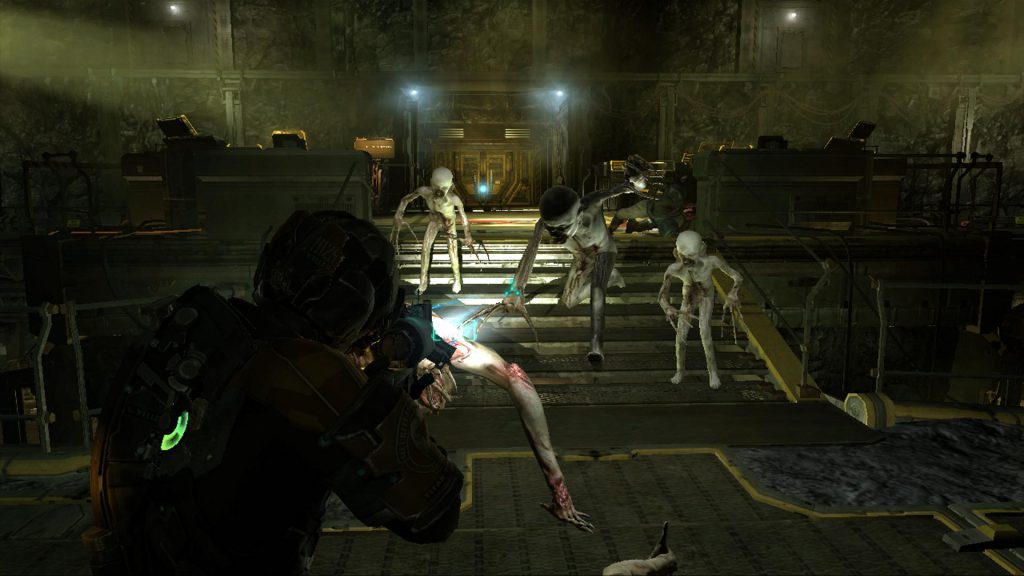
Dead Space 2
TheChirurgeon: Dead Space was a wonderful breath of fresh air when it released in 2008, introducing us to a new futuristic survival horror franchise from EA. Then in 2011 Dead Space 2 took everything that game did and improved on it, adding more action and panic but keeping much of the horror. What followed is one of the best horror games ever made and the best game in the Dead Space trilogy.
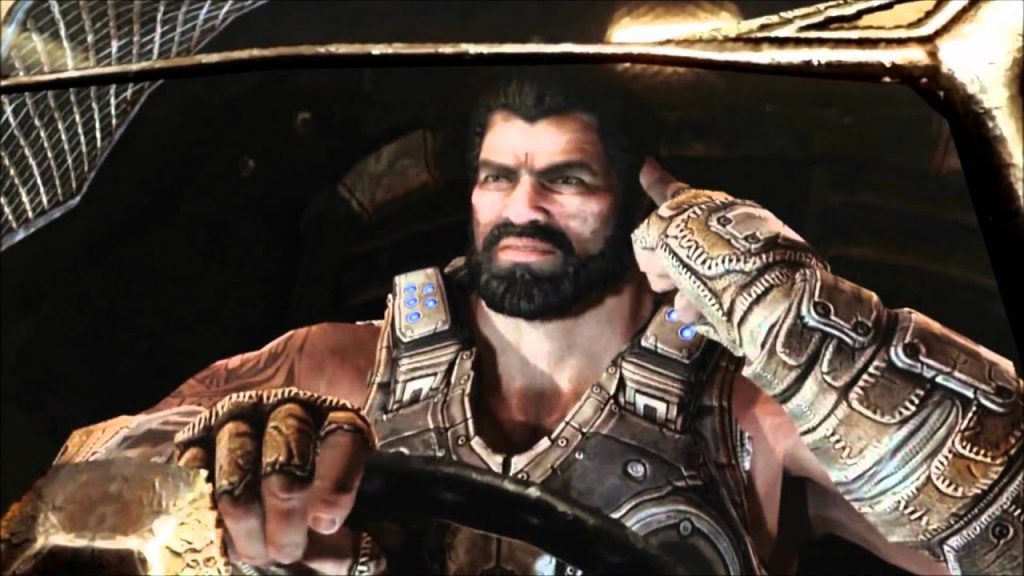
Gears of War 3
TheChirurgeon: Gears of War isn’t a trilogy but the first three games in the series are definitely set up like one – the primary story of Marcus Fenix and his allies in their fight against the Locust more or less concludes with the third game, which went bigger than any previous game with a four-player co-op campaign. The story in Gears is deeper, more expansive, and better written than most people give it credit for, and Gears 3 has a great mix of good gameplay and emotional storytelling.
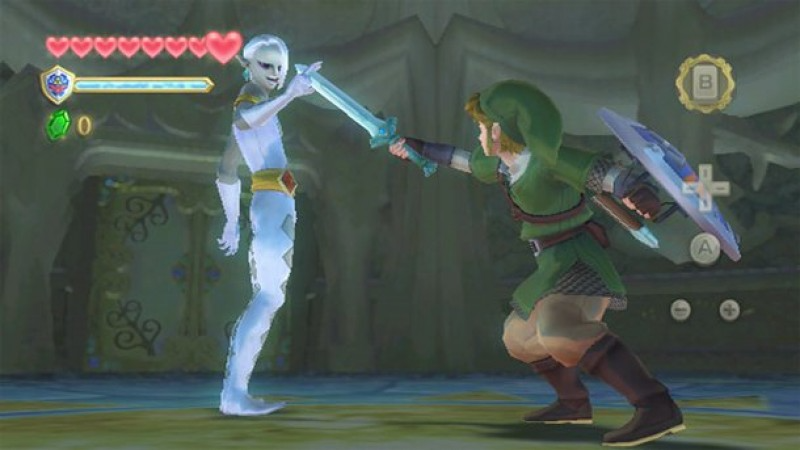
The Legend of Zelda: Skyward Sword
TheChirurgeon: The biggest game released for the Wii in 2011, Skyward Sword is more infamous than famous. It’s a solid game but by no means a great one, and well below the stellar bar set by the series’ mainline games up to that point. There are a lot of things to like about it – colorful graphics and bosses, some great puzzles and dungeons, and a fantastic, fully orchestral score. There are also a lot of things to dislike about it, such as an over-reliance on motion control gimmicks, repetitive gameplay, and one of the worst sidekicks in gaming.
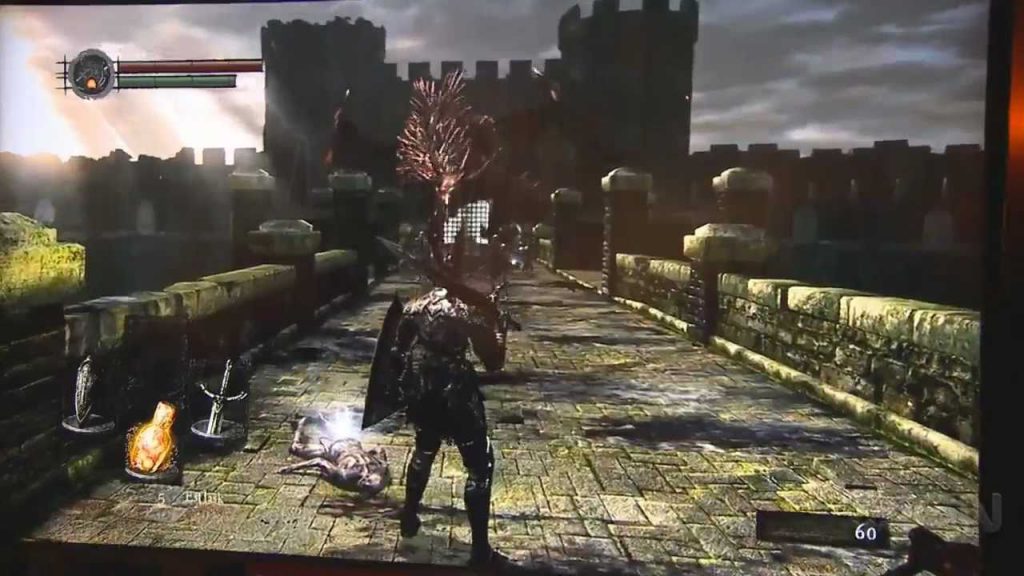
Dark Souls
Marcy: Playstation 3’s Demon’s Souls created waves through much of the PS3/Xbox 360 era with a type of game people flocked to in droves: a dark fantasy action-adventure game with at times extremely punishing gameplay, a unique take on multiplayer, and an approach to storytelling that left much up to the interpretation of players than being directly stated. While the wave of ‘Souls-like’ games that would follow can derive their lineage from Demon’s Souls, Dark Souls is probably the more correct vector for the infection that took over much of the PS4 and beyond generation, with a seemingly never-ending torrent of games that always seemed to just slightly miss what made Demon’s Souls and Dark Souls so unique and interesting, focusing instead on the concept that these games were “hard” and thus that was what was “fun” about them. Ironically, neither game–or most of their descendants–are actually very difficult, instead mostly forcing players to find solutions to the puzzles the game offered. This discussion is maybe a little in the weeds, though, because much of the conversation about Dark Souls came after its release.
Dark Souls created quite a stir on release, perhaps due to arriving at the right place at the right time. The modern internet was forming into what some might consider its best era before the eventual enshittification of the internet in the 2020s, so Dark Souls popped up when platforms like YouTube, Reddit, GameFAQs and even 4chan were active and thriving, allowing players to share theories about the game’s mysteries, “best” builds, arranging co-op, and perhaps most interestingly, setting up PvP “fight clubs” where combat devotees could meet up and beat the hell out of one another. A lot of my formative time on the internet was spent in the Dark Souls community, participating in co-op runs, SOS calls, PVP tournaments, invasion gimmicks, and many other things that I don’t think any other game has really done since. The uphill climb and difficulty of Dark Souls was ameliorated by the ability to establish connections, even tenuous ones, with both NPCs and other players. While some of the loudest and most annoying players would start spreading the “Git Gud” meme that Dark Souls is for “real” gamers and not “fake” gamers, the Dark Souls fan community pushed the game to such success because of their ability to bridge the gaps between worlds and experiment with the game.
The PC release of Dark Souls wouldn’t arrive until 2013, but by the time it rolled around the game had established itself as something “everyone” needed to try, and helped From Software rise from mild obscurity to a prestige studio, following up Dark Souls with Dark Souls II (peak gaming, btw), Bloodborne (also peak gaming), Sekiro (nearly peak), Dark Souls III (mid), and Elden Ring (also mid), turning Hidetaka Miyazaki into a somewhat household name for game producers. Dark Souls was a somewhat historic moment, one that likely won’t get replicated, since every game since has suffered the weight of the game’s success and more insufferable fans, but gaming since 2012 is a hard landscape to imagine without what Dark Souls did to introduce many of the concepts it brought to the table.
Why Was It the Best Year in Gaming?
Honestly, the wild popularity of Skyrim alone makes 2011 a strong contender here. That game really was a super-hit that only a few games have ever experienced.
But there’s more to love about 2011 than just Skyrim. It was a year that brought us some of the best sequels ever made, squeezing out all the power they could from the waning days of the seventh console generation. Bastion would spearhead a whole slew of indie games with it’s success. Commander would become the single most popular format format for Magic: The Gathering, changing the way Wizards looks at the game. And Codex: Necrons would redefine an entire faction of the 41st millennium for the better.
Do I forget about some of these because too much of my brain has been taken up by Skyrim? Sure. But that doesn’t mean that they don’t also rule. Can Skyrim alone push 2011 into the status of best year ever in games? Probably not. Put both of these together through and yeah, you’ve got a real powerhouse year on your hands.
This article is part of a larger series on the best year in gaming. For more years, click this link. Have any questions or feedback? Drop us a note in the comments below or email us at contact@goonhammer.com.
